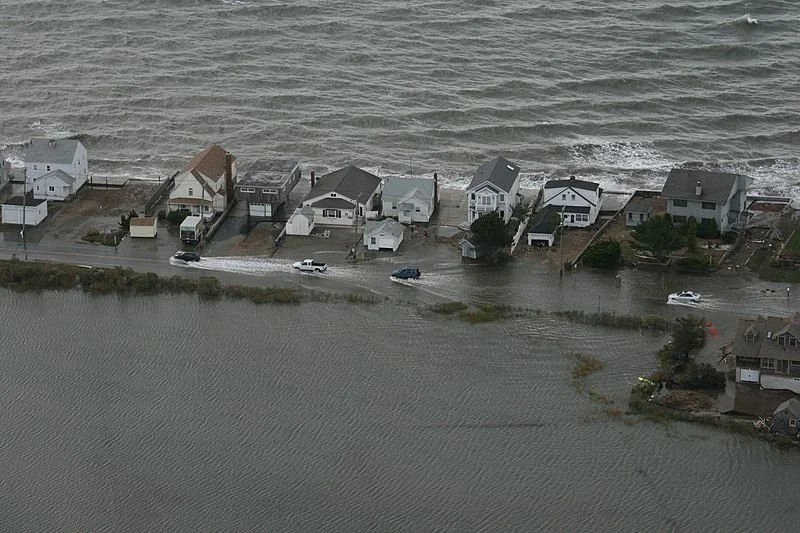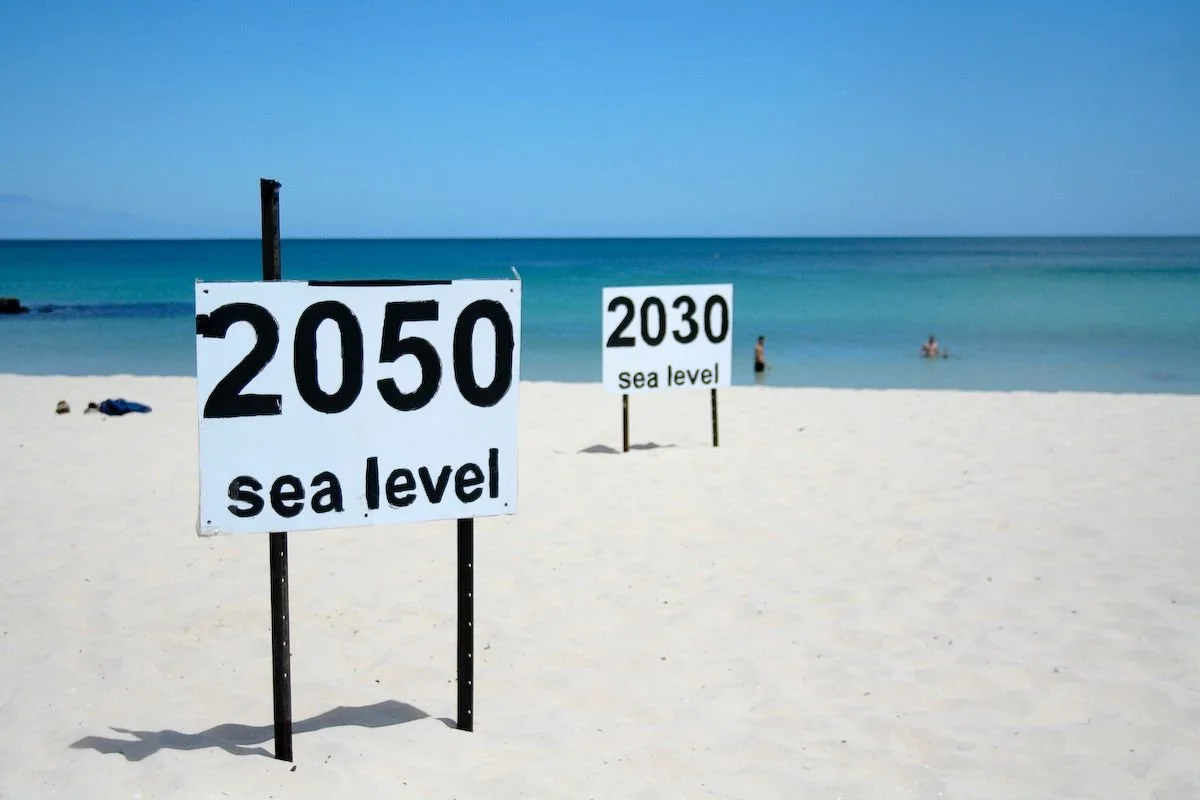Hurricane Sandy: Destruction Fueled by the Climate Change Crisis
By Lindsey Neuwirth, Stony Brook University Marine Conservation and Policy Graduate Student
In 2012, a Category 1 hurricane rapidly crawled up the US East Coast, veering left as it approached Long Island, New York. It collided with a winter-like storm system, becoming even more massive than before. The infamous Superstorm Sandy hit Long Island and the surrounding region with incredibly fierce winds, destroying anything in its path. Extremely high tides from the full moon created extensive flooding. Almost 10 years later, the subject of Hurricane Sandy is still an emotional topic for those who lost their homes, their belongings, or even loved ones. While most affected residents have returned to their normal lives and rebuilt their communities, it is important to not disregard such a storm—so we can better prepare for the future.
The natural disaster was inevitable given the unique conditions that were presented. However, the large number of people affected and the economic cost generated could have been much less. Sea level rise is fueled by human-induced climate change, which accelerates the melting of glaciers and ice, and warms and expands seawater. Research suggests such sea level rise compounded the negative effects of Hurricane Sandy, causing the storm to affect an additional 71,000 people at the cost of an extra $8.1 billion. Under these circumstances, communities face excessive flooding that destroys homes, businesses and other coastal structures. The surplus damage is concerning as the current climate projections of sea level rise are much greater than in 2012.
Rising Sea levels Photo via Flickr, by go_greener_oz. Licensed under CC BY-ND 2.0
Throughout the coming decades, climate change is also expected to increase the occurrence of tropical cyclones that reach destructive levels. With more frequent, more intense storms, the effects of sea level rise will be more impactful during such natural disasters and more often too. The most recent IPCC report released for 2022 states with high confidence that between 2040 and 2100 the combination of sea level rise and storm surge will increase flood risks. More coastal communities will need to either adapt or move out of these high-risk areas as the increased flooding may eventually turn into permanent inundation. The IPCC report also adds that the magnitude of extreme sea level events will significantly escalate in the approaching decades.
According to 2016 projections, sea level will increase at least one foot by 2050 and it is likely we could start seeing those effects as early as 2030. This would permanently displace more than 7,000 Long Island residents alone. By 2100, it is likely to experience sea levels to rise over 6 feet, displacing almost 160,000 more residents. Superstorm Sandy left 20,000 people homeless a year after it happened. This means that by the end of the century, the number of people that will be permanently displaced will be 12.5 times greater than that of displacement caused by Sandy.
The additional displacement due to climate change that storms like Hurricane Sandy creates is a worldwide concern. By 2050 it is expected that 1 in every 45 people around the world will need to migrate due to climate change displacement. Approximately 48 islands globally will be lost to sea level rise by 2100. To address these frightening statistics, it is essential that plans are made to prepare for the future. This statistic means that countries must prepare for the migration of those who have been forced out of their residence. Unfortunately, under present day laws, countries are not required to welcome climate migrants. This lack of policy will leave people homeless and vulnerable to resource scarcity. It is crucial that such policies are put in place to prepare for future adaptation of sea level rise and increasing weather catastrophes.
Despite the frightening projections made for coastal communities, there are things that can be done to mitigate damage and minimize risk to life and property. Homeowners in coastal areas can sometimes elevate their houses above the predicted flood level to avoid damage. Flood inundation that accompanies sea level rise can be prevented through wetland restoration efforts that enhance water retention. Other natural barriers such as seagrass habitats and oyster reefs can be effective in improving the natural environment and provide protection from storm surges. [3] Unfortunately, there are many cases where this is not enough. Relocation serves the reality in many coastal communities. However, relocation comes with a massive price tag that most cannot afford, especially when there is no prior preparation or previous allocation of funds. Sticking our heads in the sand is no longer a viable option. Policymakers must face this issue head on through creating laws, allocating proper funds, as well as providing incentives for reducing risk. This can be effective through rewarding states or areas that have properly adapted for future sea level rise or encouraging people to not live in these future high risk zones.
It is important to recognize the influence human action has had during past tragedies to avoid further damage in the future. This must be followed by a focus to build equitable and resilient communities that are supported by government entities and funding. Super Storm Sandy affected the lives of so many people, followed by a long road to recovery for many on Long Island. But Sandy has proven to be one of many intense storms to strike as our climate rapidly changes. The compounding concern of sea level rise highlights the urgent need to address the resilience of coastal communities. It is crucial that the key drivers of the climate crisis, including large corporations and governments, are recognized. This would allow for the lowest sea level rise predictions to be reached to give communities the chance to be resilient and adapt under such circumstances.


